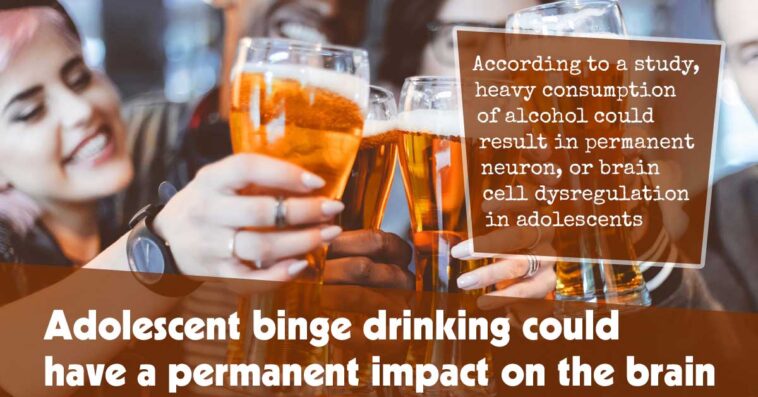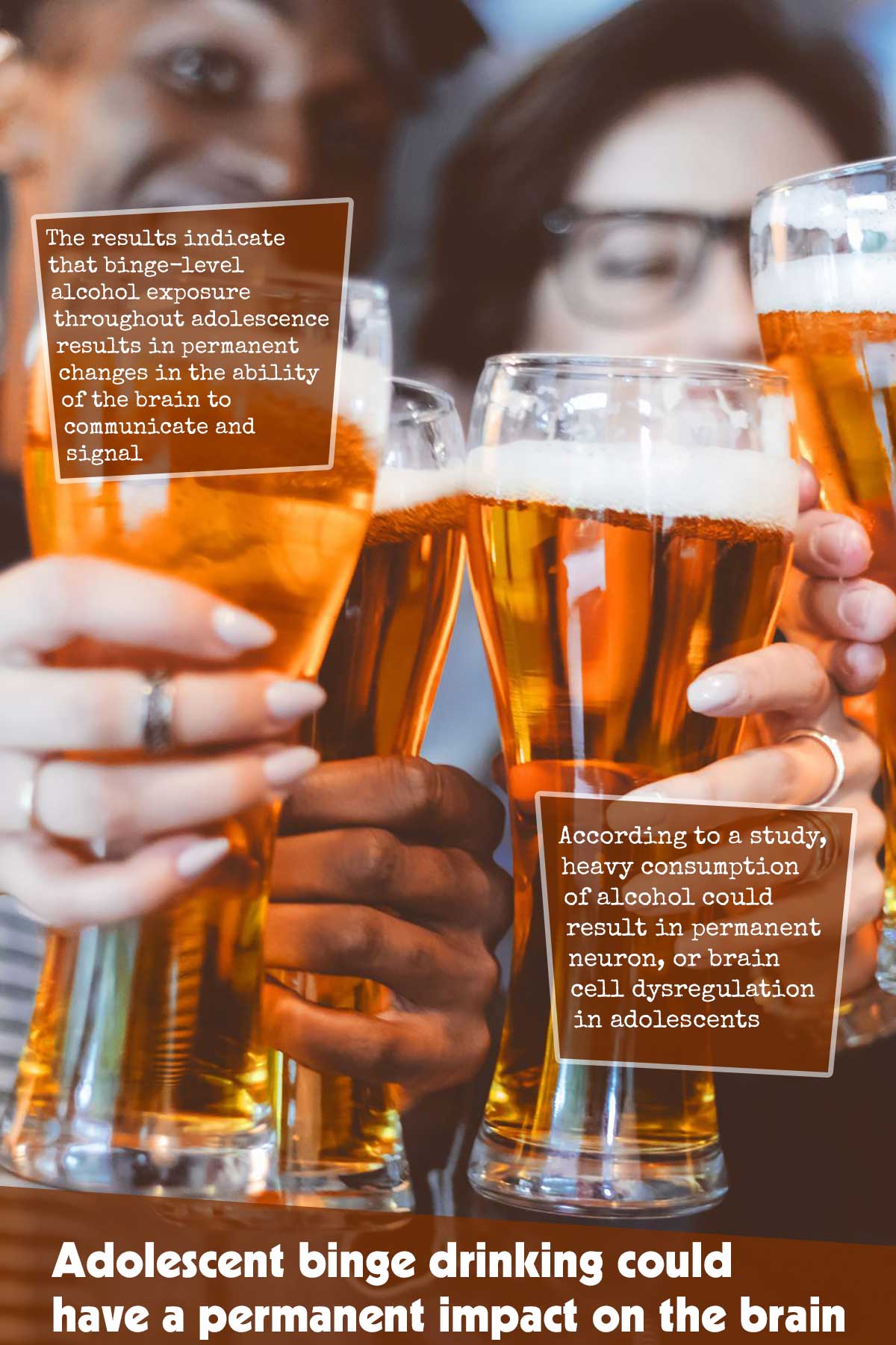According to a study, heavy consumption of alcohol could result in permanent neuron, or brain cell dysregulation in adolescents.1✅ JOURNAL REFERENCE
DOI: 10.1016/j.neuropharm.2023.109561
The results indicate that binge-level alcohol exposure throughout adolescence, the brain developing years, results in permanent changes in the ability of the brain to communicate and signal, potentially laying the foundation for long-term behavioral changes and leaning towards cognitive change mechanisms induced by alcohol consumption.
The study shows that if neurons are knocked off this trajectory by adolescent binge drinking, they may be unable to get back on track, even after the consumption of alcohol ceases.
The prefrontal cortex is an important brain area for decision-making, risk assessment, and executive functioning and isn’t fully formed in adolescents and is still maturing until about age 25. Prefrontal cortex development disruption in young individuals could have serious and permanent consequences.
Heavy binge alcohol consumption is problematic for everybody, but the adolescent brain seems to be especially vulnerable to the effects, which will last for many years.
The researchers made use of an adolescent mice model exposed to ethanol to understand how different neuron populations in the cortex, the brain’s outermost layer, are altered by voluntary binge drinking.
This mouse model is known to consume alcohol in behaviors that mimic human binge alcohol consumption, defined by the NIAAA as a drinking pattern that results in an alcohol concentration in the blood of 0.08% or greater, normally in about 2 hours.
Binge alcohol consumption is regarded as one of the most harmful behaviors of alcohol abuse, and understanding how it impacts the developing brain could open the door to treatment options.
Mice were given access to alcohol over 30 days. Because of their shorter lifespan faster and development, this corresponded to approximately 11 to 18 years in humans. The electrophysiological properties of the prefrontal cortex’s various neurons were then looked at to understand how binge alcohol consumption in adolescence influenced the firing and wiring of these circuits.
Whole-cell patch clamp electrophysiology was made use of, in combination with techniques that include optogenetics, which allowed individual neurons to be isolated and measurements recorded that were associated with intrinsic excitability, which includes each neuron’s ability to fire action potentials. This helped to understand how the ability of these neurons to signal with other neurons had been altered.
A major population of cells known as somatostatin neurons that provide neurotransmitter release inhibition from other types of cells throughout the brain seemed to be permanently dysregulated in the binge-drinking mice in comparison to mice that only drank water while developing.
Somatostatin neurons release inhibitory neurotransmitters such as GABA in addition to inhibitory peptides such as somatostatin, and proper neuron functioning is required for a healthy brain. The neurons were found to be more excitable, which means they were signaling excessively and dampening other important neuron activity, as much as 30 days after the mice ceased alcohol consumption, when the mice had transitioned into adults.




